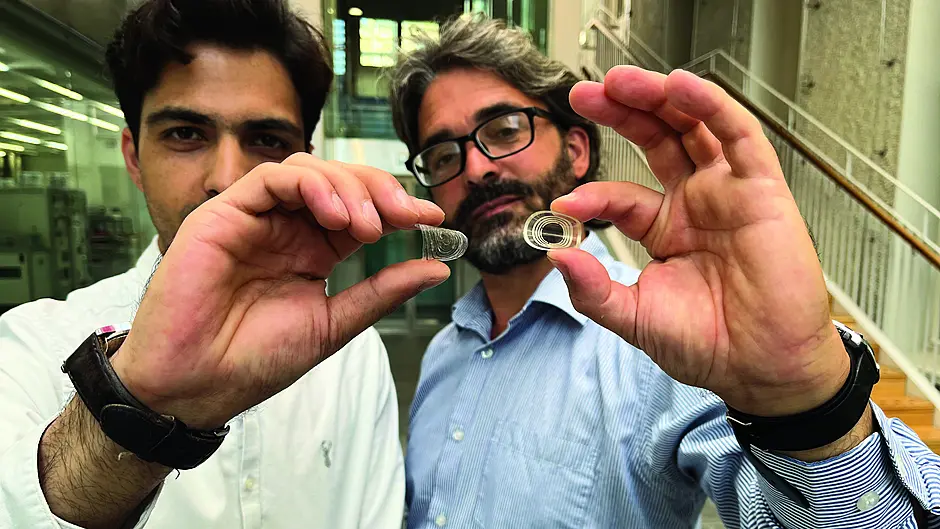ARTIFICIAL Intelligence is changing the landscape of farming in West Cork and will becoming an essential tool for every farmer in the next decade, with technology promising more efficient, economical, and sustainable practices.
Researchers at Tyndall in Cork city have been working with Teagasc on the groundbreaking Vistamilk project with Science Foundation Ireland. The VistaMilk SFI Research Centre represents a collaboration between agri-food and information communications technology (ICT) research institutes and leading Irish/multinational food and industry companies including the likes of Carbery and Dairygold.
Make no mistake – the work being done in this research is going to shape the actions of farmers in the field in the very near future, and artificial intelligence is key to that.
‘We’ve entered into the information age, and I’ve been to the Ploughing Championship many times, and the farming community are very savvy in terms of the advantages that technology can bring to their quality of life and to the quality of their herds, in terms of meat and dairy as well as arables,’ said Dr Brendan O’Flynn, Head of group for the Wireless Sensor Networks Research Group at Tyndall, part of whose role focuses on the Vistamilk project.
‘Will AI transform things? Absolutely. Already there are apps that the farmers are using, you know, to look at weather – the Met Office gives a prediction of pasture of grass growth to the farming community based on the AI engines that have. Their lives are already being transformed, and they have more information about what is happening on their farm in real time, and it just gives them the capability to make more informed decisions about what they want to do with their farming practices on any given day or week. Farmers’ lives are already being changed through the use of artificial intelligence and machine learning. They may or may not know it, how they’re getting the information, but this information is being generated by artificial intelligence.
‘AI is already being used for Artificial Insemination in terms of this is the best breeding cow based on the history that they have of the calves that they’ve had, and the yield that those calves have provided. So farmers are already using artificial intelligence. But, it’s invisible to them.’
Dr Salvatore Tedesco is leading the Artificial Intelligence team for Tyndall’s Wireless Sensor Networks Research Group. He says farmers won’t be able to resist the changes technology will bring. ‘Probably the farmers will realise this more and more within the next five to 10 years,’ said Dr Tedesco.
‘The adoption of AI in agriculture will be so pervasive, it will be almost impossible for a farmer to work and be as productive as other farmers without aiming to use AI. So it will be almost “mandatory” if a farmers want to keep himself in the business, to use AI in order to have this edge and keep the overall productive productivity high.’
However, rather than seeing Artificial Intelligence as a threat, it will be something to embrace and improve farmers’ lives, the welfare of their animals, and make farming more sustainable.
‘With AI, you can reduce costs in terms of feeding, in terms of milking, in terms of heat monitoring. You can use the resources more effectively, like feed and water, in order to minimise waste and maximise the output. In this way, you can also increase the overall productivity, but also you can make the system environmentally sustainable, reducing the footprint of the entire livestock operations.
‘One of the key examples in animal health in using AI for this is antibiotics. Animals are quite prone to infections of different sources, so at the moment farmers provide all these broad range of antibiotics. But some animals don’t need this amount of antibiotics, or maybe some animals can get more antibiotics than they need, or some animals have less antibiotics that we need. And this can lead to more morbidity, more disease for the cows, or they can increase the mortality of the cows if you don’t get enough antibiotics. With AI you will have more customised type of interventions where you give the exact dose that each animal needs in terms of antibiotics. It’s making it better.’
The Government has already seen the benefits the work at Vistamilk can bring and in May, €20m in funding was approved for the next stage of the project, with a further €5m coming from industry partners in funding.
The AI is already being used literally in the field in West Cork. ‘In West Cork and Kerry, there are large herds that are wearing collars and the information that’s coming from those collars is using machine learning and AI engines, and we’re able to understand things like cow lameness, cow fertility, and cow health,’ said Dr O’Flynn.
Indeed the work being done at Tyndall could also play a key role in water quality. ‘We’re developing soil nitrate sensors, which will give real time data around soil quality. And aligned with that is the optimisation of fertilisation regimes to reduce or eliminate water runoff and impact on water quality.
‘We have other water quality programmes that we have been looking at, say the River Lee from all the way to its catchment area to understand the ebb and flow of nitrates and phosphates and dissolved oxygen from a water quality management perspective, which, of course, then, is relevant to the farmers in terms of minimising runoff and minimising impact of the on the environment of their fertilization regimes.’
Dr O’Flynn said farmers will be doing the AI monitoring in many cases themselves.
‘AI engines are going to be coming down the track for on-farm milk quality monitoring in terms of antibiotics and in terms of mastitis detection, based on what is currently a lab based activity where you get the information back a week later.
‘We’re developing sensors and systems that are compatible with on-farm diagnostics of bovine viral disease, based on saliva and mucus analysis. That’s all coming.’








